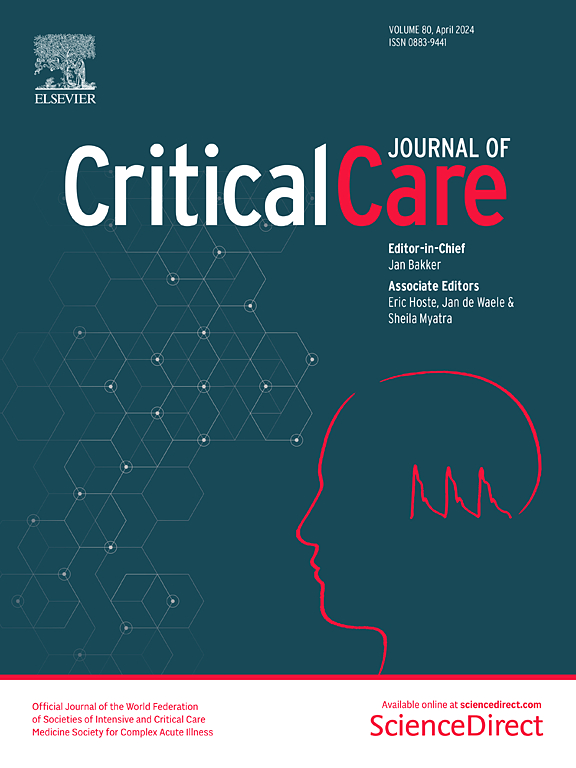Assessment of recruitment from CT to the bedside: challenges and future directions
IF 8.8
1区 医学
Q1 CRITICAL CARE MEDICINE
引用次数: 0
Abstract
Assessing and quantifying recruitability are important for characterizing ARDS severity and for reducing or preventing the atelectrauma caused by the cyclic opening and closing of pulmonary units. Over the years, several methods for recruitment assessment have been developed, grouped into three main approaches: 1) Quantitative CT Scanning: This method accurately measures the amount of atelectatic lung tissue that regains aeration; 2) Regional Gas Volume Measurement: Based on anatomical markers, this approach assesses gas volume within a specified lung region; 3) Compliance-Based Gas Volume Measurement: This technique compares actual gas volume at a given pressure to expected values, assuming respiratory system compliance is constant within the explored pressure range. Additional methods, such as lung ultrasonography and electrical impedance variation, have also been explored. This paper details the distribution of opening and closing pressures throughout the lung parenchyma, which underpin the concept of recruitability. The distribution of recruitable regions corresponds to atelectasis distribution, with the pressure needed for recruitment varying according to whether the atelectasis is “loose” or “sticky.” We also discuss the effects of different PEEP levels on preventing atelectrauma, the importance of keeping some lung areas closed throughout the respiratory cycle, and briefly cover the roles of sigh ventilation, prone positioning, and the closed lung approach.求助全文
约1分钟内获得全文
求助全文
来源期刊

Critical Care
医学-危重病医学
CiteScore
20.60
自引率
3.30%
发文量
348
审稿时长
1.5 months
期刊介绍:
Critical Care is an esteemed international medical journal that undergoes a rigorous peer-review process to maintain its high quality standards. Its primary objective is to enhance the healthcare services offered to critically ill patients. To achieve this, the journal focuses on gathering, exchanging, disseminating, and endorsing evidence-based information that is highly relevant to intensivists. By doing so, Critical Care seeks to provide a thorough and inclusive examination of the intensive care field.
 求助内容:
求助内容: 应助结果提醒方式:
应助结果提醒方式:


